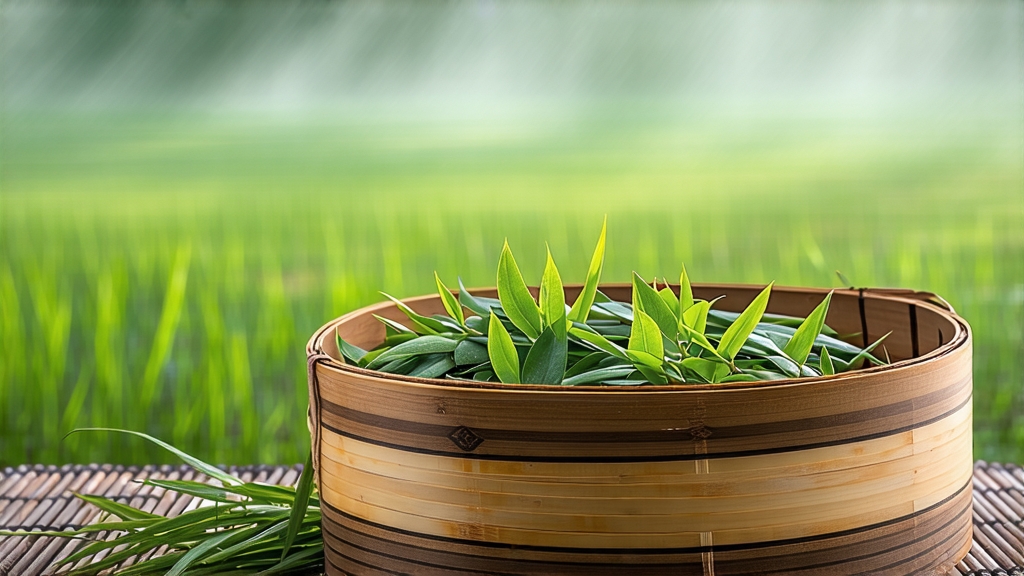
If every tea tells a story, Longjing speaks in the quiet dialect of willow-lined dikes, stone bridges, and the low call of cormorants skimming Hangzhou’s West Lake. To the uninitiated it is merely “green tea,” yet within that pale jade liquor lies eight centuries of imperial craving, Buddhist patience, and the stubborn artistry of farmers who still shape each leaf against the scorching curve of a wok. This article invites the international reader to walk the narrow terraces of Meijiawu village, to hear the metallic song of the pan, and to taste the season’s first sunlight captured in a cup.
-
Historical echoes
Legend places Longjing’s birth in the Song dynasty (960-1279), when a Buddhist monk planted tea bushes beside the Dragon-Well spring on Fengshan ridge. The spring’s water, dense with limestone minerals, was said to twist like a dragon when stirred, hence the name. By the Ming era the tea had become tribute, carried by canal to Beijing in bamboo-lined crates cushioned with lotus leaves. The Qianlong Emperor, touring the south in 1751, so admired the bushes at Hugong Temple that he plucked eighteen shoots himself and conferred upon them the imperial seal; those same bushes still stand, fenced and venerated. Western palates discovered Longjing after the 1843 opening of Canton trade, when clipper ships carried it to London salons where ladies praised its “orchard nose” and poets likened it to “drinking a green moonbeam.” -
Micro-terroirs within West Lake
Authentic West Lake Longjing occupies barely 1,680 hectares split into five micro-zones. Shifeng (Lion Peak) yields the most sought-after leaves, grown among apricot and osmanthus trees whose roots share mycorrhizal fungi with the tea bushes, adding a subtle floral echo. Meijiawu’s sandy loam drains quickly, stressing the plants into concentrating amino acids; the result is a sweeter, almost milky texture. Wengjiashan, facing east, catches the dawn mist that filters ultraviolet light, preserving chlorophyll and delivering the brightest emerald hue. Any leaf grown beyond these ridges—however skilled the craft—may legally be labeled “Zhejiang Longjing,” but insiders can taste the absence of limestone minerality and lake-cooled nights. -
Cultivars and clonal selection
The original population is the Old-Species Longjing group, a mixed stand of seed-grown bushes with serrated leaves that taper like a sparrow’s tongue. In 1981 agronomists selected Longjing #43, a clonal cultivar that sprouts seven to ten days earlier, offers uniform emerald color, and withstands frost. While #43 dominates modern commerce, connoisseurs still chase the heirloom “Teng tea,” whose gnarled trunks snake along the ground and whose leaves carry lower catechins, translating into softer astringency. A third variant, Longjing Changye (Long-leaf), is allowed to grow 30 % longer before plucking, yielding a more pronounced orchid note but demanding even higher firing skill to flatten without breaking the cell walls. -
The choreography of spring plucking
Quality is decided between Qingming (early April) and Grain Rain (late April). The ideal pick is the “sparrow’s tongue” shoot: one unopened bud plus the adjacent leaf, exactly 2.5 cm long, weighing 0.3 g. A skilled picker can gather 600 g of fresh leaves in an hour; ten kilograms are needed to produce one kilogram of finished tea. Picking starts at 6 a.m. while dew still glitters, because solar irradiation after 10 a.m. raises leaf temperature, accelerating enzymatic oxidation that dulls the jade color. Leaves are deposited in shallow bamboo baskets to prevent compression; trucked to the village within two hours, they are spread 3 cm thick on sieves to lose surface moisture for exactly four hours—longer withers risk grassy off-notes, shorter leaves water that will spit in the wok. -
Hand-firing: ten minutes that decide a year
The pan is the stage; the tea master, the dancer. Cast-iron woks are pre-heated to 280 °C, brushed with tea-seed oil, then cooled to 100 °C within seconds by a swipe of damp hemp cloth. The master tosses 250 g of withered shoots;